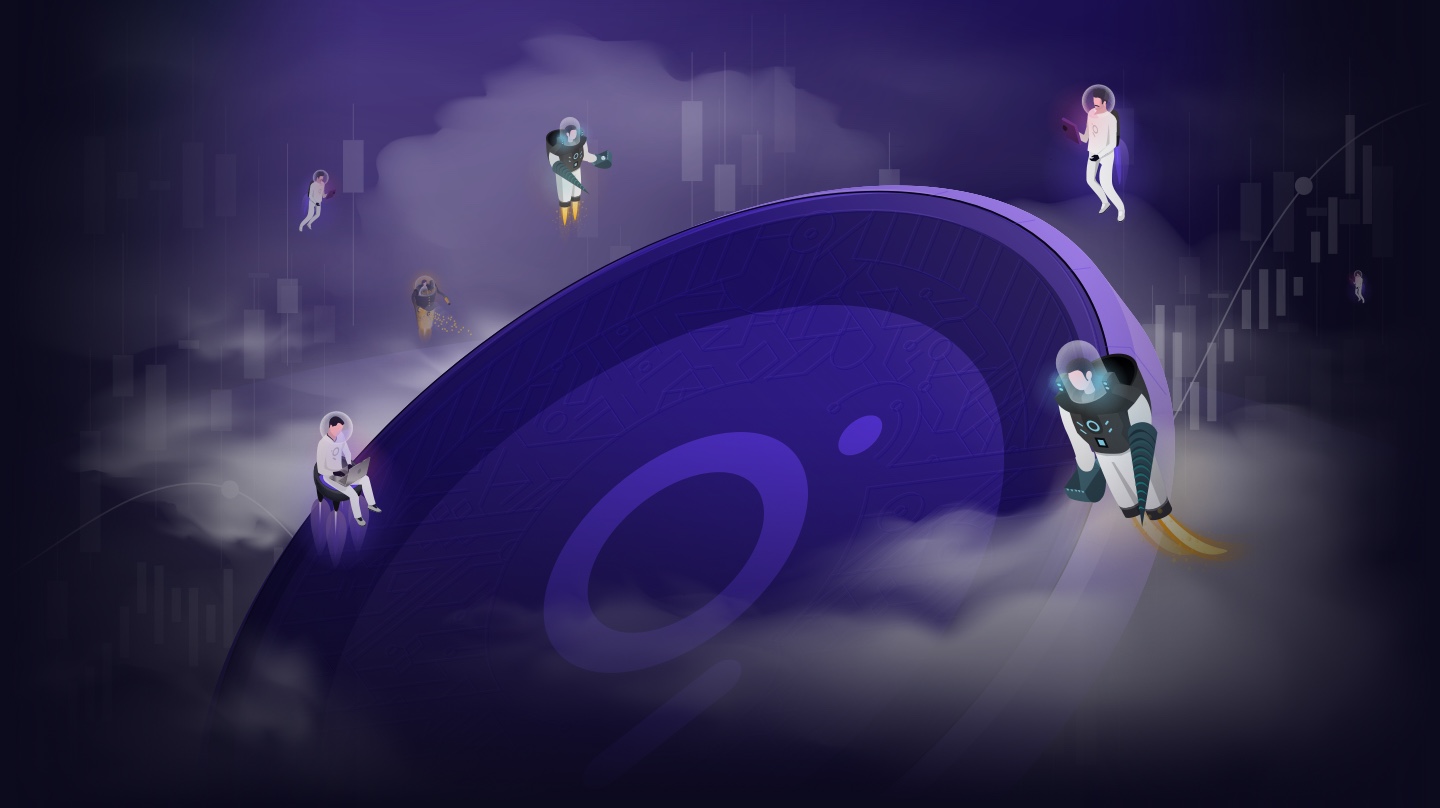

The Graph GRT Token Economics
An overview of The Graph Network, incentives for providing Indexing and Curating services, and how you can get involved.
is a protocol for organizing blockchain data and making it easily accessible. It’s powering many of the most used applications in DeFi and the broader Web3 ecosystem today. Anyone can build and publish subgraphs, which are open APIs that applications can query with GraphQL. Subgraphs make it easy for developers to build on blockchains. What Google does for search, The Graph does for blockchains.
Currently, The Graph’s hosted service is processing over 4 billion monthly queries for applications like , and , for data like token prices, past trade volumes, and liquidity. However, The Graph’s mission is not to run a hosted service in perpetuity but to eliminate the possibility for APIs, servers and databases becoming single points of failure and control. This is why we’re building The Graph Network to create an open marketplace of Indexers and Curators that work together to efficiently index and serve all the data for DeFi and Web3 in a decentralized way.
The network will allow apps to be serverless - making them truly unstoppable since they’ll no longer rely on a single server or database but rather a network of nodes that are incentivized to keep the service running. The Graph Network also lets diverse, active participants earn income for providing data services rather than giving that power to data monopolies.
The Graph is transforming the existing data economy to one with better incentives, safer data sources, curated APIs and more expressive querying. The Graph Network will be launching later this year.
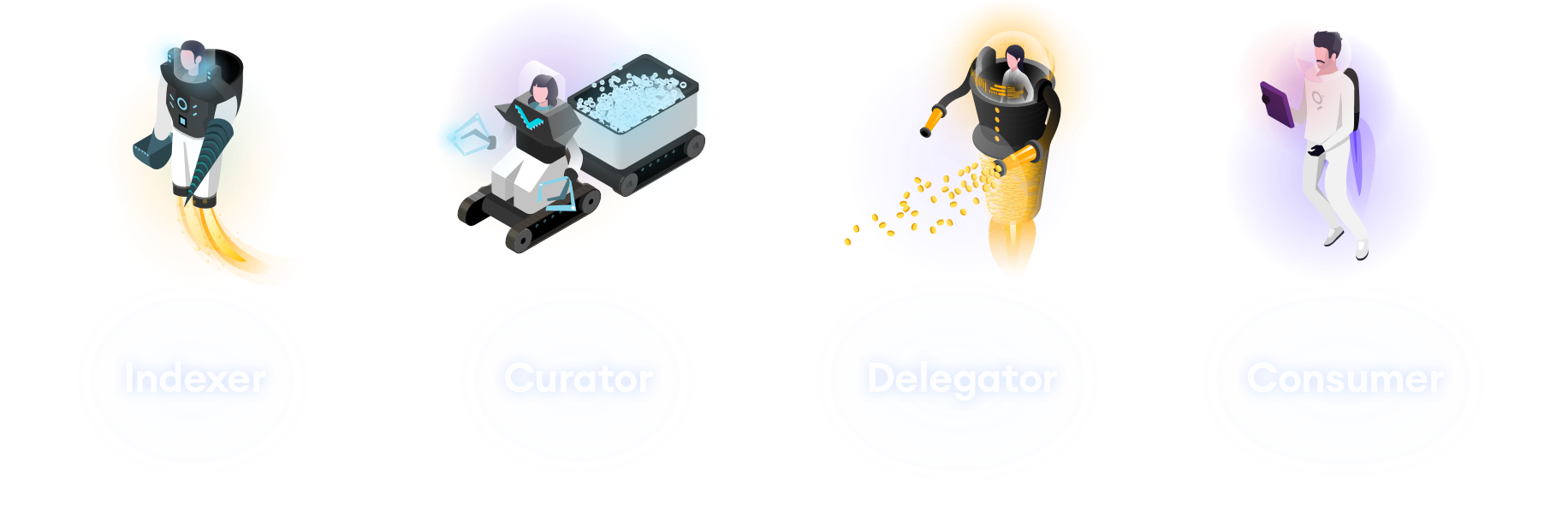
The Graph Network Roles
There are multiple ways to contribute to The Graph Network and the open data economy for both technical and non-technical individuals.

Indexers (Earn GRT)
Indexers are node operators in The Graph Network that stake Graph Tokens (GRT) in order to provide indexing and query processing services. Indexers earn query fees and indexer rewards for their services.
Technical Level Required: Advanced
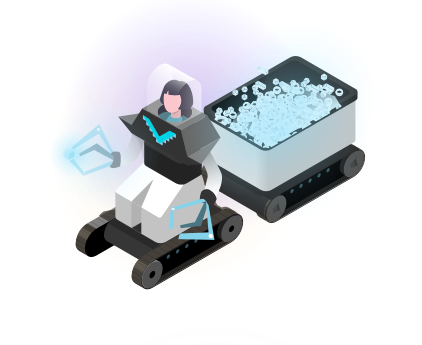
Curators (Earn GRT)
Curators are subgraph developers, data consumers or community members who signal to Indexers which APIs should be indexed by The Graph Network. Curators deposit GRT into a bonding curve to signal on a specific subgraph and earn a portion of query fees for the subgraphs they signal on; incentivizing the highest quality data sources. Curators will curate on subgraphs and deposit GRT via the Graph Explorer dApp. Because this occurs on a bonding curve, that means that the earlier you signal on a subgraph, the greater share of the query fees you earn on that subgraph for a given amount of GRT deposited. This also means that when you go to withdraw, you could end up with more or less GRT than you started with.
Technical Level Required: Moderate

Delegators (Earn GRT)
Delegators are individuals who would like to contribute to securing the network but do not want to run a Graph Node themselves. Delegators contribute by delegating GRT to existing Indexers and they earn a portion of query fees and indexing rewards in return. Delegators select Indexers based on their performance on measures like query fee rates, past slashing and uptime as well as delegator parameters like the cut of fees and rewards from the Indexer. Delegators will delegate and undelegate GRT on Indexers via the Graph Explorer dApp.
Technical Level Required: Low

Consumers (Pay GRT)
Consumers are the end-users of The Graph that query subgraphs and pay query fees to the Indexers, Curators and Delegators. Consumers are likely to be developers or projects themselves that cover query fees for their applications as they would AWS or cloud service costs. However, some applications will pass on query fees to users or bundle the cost in product fees. Consumers will pay for query fees via “gateways” or wallets that will be built on top of open source contracts in The Graph Network.
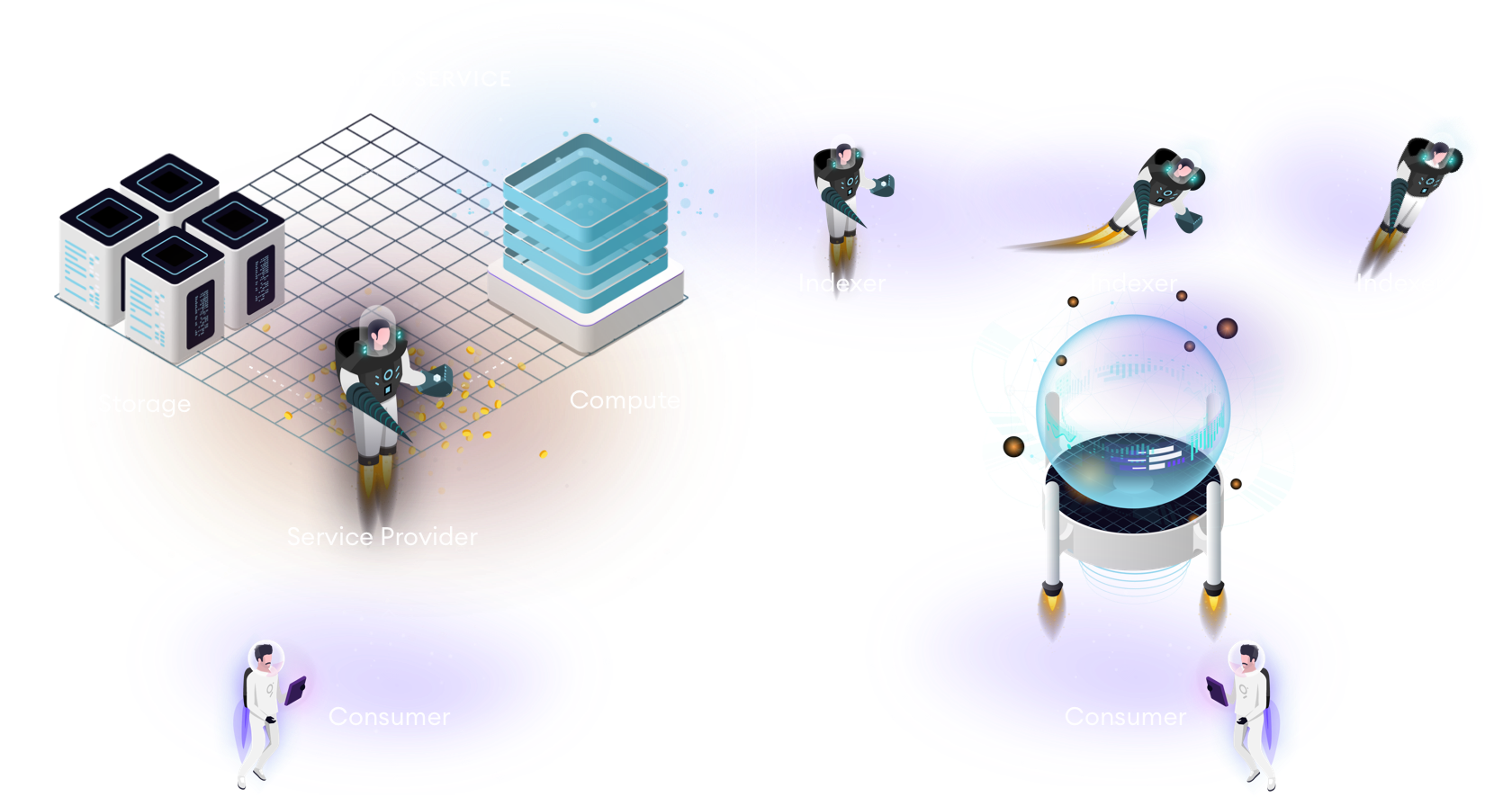
Introducing Graph Token (GRT)
The Graph is working to bring reliable decentralized public infrastructure to the mainstream market. To ensure economic security of The Graph Network and the integrity of data being queried, participants use Graph Tokens (GRT). GRT is a work token that is locked-up by Indexers, Curators and Delegators in order to provide indexing and curating services to the network.
Work Token Model
GRT will be an ERC-20 token on the Ethereum blockchain, used to allocate resources in the network. Active Indexers, Curators and Delegators can earn income from the network proportional to the amount of work they perform and their GRT stake. Total GRT supply at mainnet launch will be 10 billion tokens, and new token issuance in the form of indexing rewards will begin at 3% annually and is subject to future independent technical governance. More information about token distribution and technical governance will be released as we approach network launch.
Incentives in The Graph Network
GRT that is staked in the protocol is subject to a thawing period and can be slashed if Indexers are malicious and serve incorrect data to applications or if they index incorrectly. Curators and Delegators cannot be slashed for bad behavior, yet there is a deposit tax on Curators and Delegators to disincentivize poor decision making that could harm the integrity of the network. Curators also earn fewer query fees if they choose to curate on a low-quality subgraph, since there will be fewer queries to process or fewer indexers to process those queries.
Query Marketplace
Indexers that stake GRT operate in a query marketplace where they earn query fees for indexing services and serving queries to subgraphs - like serving Uniswap trade data on Uniswap.info. The price of these queries will be set by Indexers and vary based on cost to index the subgraph, the demand for queries, the amount of curation signal and the market rate for blockchain queries. Since Consumers (ie. applications) are paying for queries, the aggregate cost is expected to be much lower than the costs of running a server and database.
A Gateway can be used to allow consumers to connect to the network and to facilitate payments. The team behind The Graph will initially run a set of gateways that allows applications to cover the query costs on behalf of their users. These gateways facilitate connecting to The Graph Network. Anyone will be able to run their own gateways as well. Gateways handle state channel logistics for query fees, and route to Indexers as a function of price, performance and security that is predetermined by the application paying for those queries.
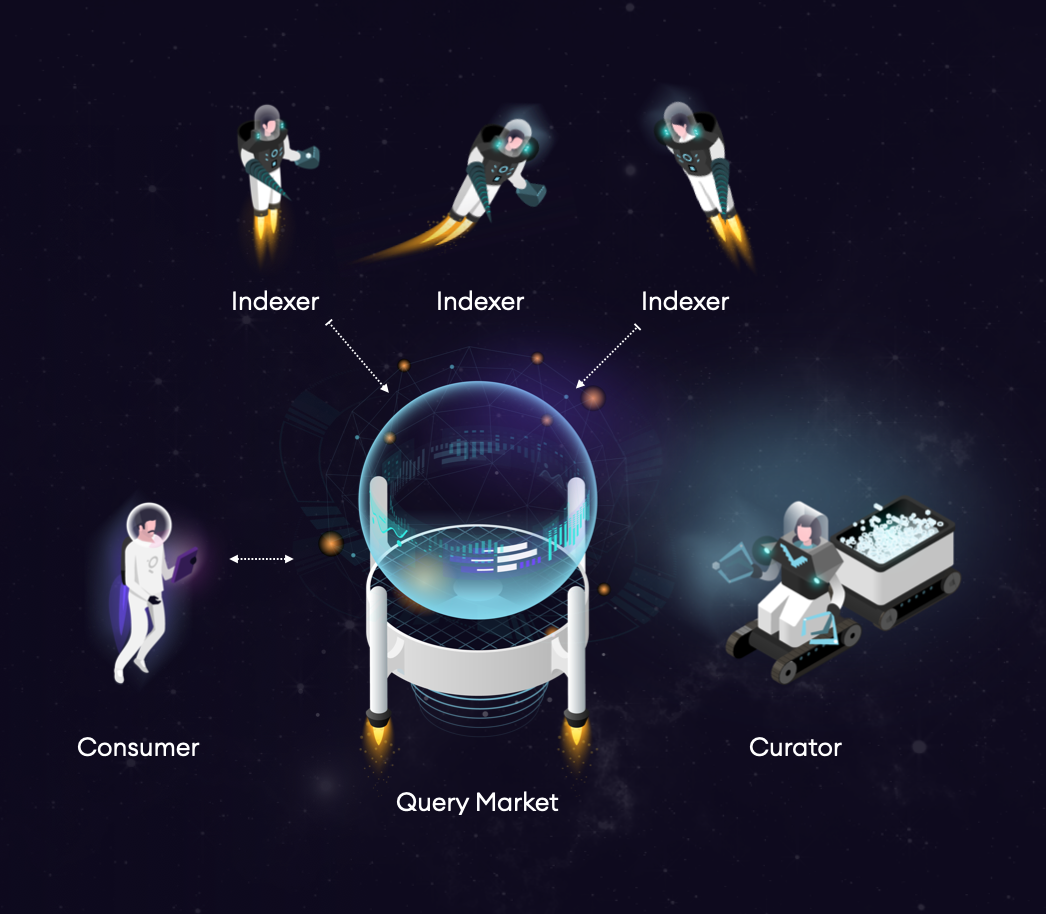
Indexing Rewards
In addition to query fees, Indexers and Delegators will earn indexing rewards in the form of GRT that is new token issuance distributed proportional to Curator signal and allocated stake. Indexing rewards will start at 3% annually. Future GRT monetary policy will be set by an independent technical governance which will be established as we approach network launch.
The Graph Network will have epochs which are measured in blocks and are used for the Indexing Rewards calculations.
Cobbs-Douglas Production Function
In addition to query fees and indexing rewards, there is a Rebate Pool that rewards all network participants based on their contributions to The Graph Network. The rebate pool is designed to encourage Indexers to allocate stake in rough proportion to the amount of query fees they earn for the network.
A portion of query fees contributed to the Rebate Pool are distributed as rebate rewards using the Cobbs-Douglas Production Function, a function of contributions to the pool and their allocation of stake on a subgraph where the query fees were generated. This reward function has the property that when Indexers allocate stake in proportion to their share of contribution of fees to the rebate pool, they will receive back exactly 100% of their contributed fees back as a rebate. This is also the optimal allocation.
Protocol Sinks & Burns
A portion of protocol query fees are burned, expected to start at ~1% of total protocol query fees and subject to future technical governance. The aforementioned deposit tax that is incurred by Curators and Delegators withdrawing their GRT is also burned, as well as any unclaimed rebate rewards
Delegation Parameters
Each Indexer specifies how Delegators are rewarded based on the following two delegation parameters:
- Reward cut - The % of indexing rewards that the Indexer keeps.
- Fee cut - The % of query fees that the Indexer keeps.
Indexers accept delegated stake according to a delegation capacity, which is a multiple of their own contributed stake. This ratio between Indexer and Delegator stake will be set through technical governance.
All of these mechanisms combined are designed to produce an open efficient marketplace for data services on top of fully decentralized infrastructure.
Summary
- Community Stats: 2.3k+ subgraphs deployed, 3k+ Developers, 200+ Indexers, 400+ Curators
- Token Ticker: GRT
- Total Initial Token Supply: 10 billion
- New Issuance Schedule: Starting at ~3% annually, up to technical governance
- Token Burning: Expected to be ~1% of query fees and all deposit taxes are burnt, up to technical governance
- Maximum Token supply: 10 billion minted + new issuance - burning
Get involved in The Graph Network!
Anyone can be an Indexer, Curator or Delegator and stake GRT against their work in the protocol.
There have already been over 2,300 subgraphs deployed by more than 3,000 developers and more than 200 Indexers are already participating in the incentivized testnet. As we approach mainnet launch of The Graph Network, there will be many ways you can get involved in our ecosystem:
- Follow over 200 Indexers in our
- Spin up a node as an Indexer prior to the mainnet launch later this year
- Register to be a in our before registration closes
- Upcoming Ambassador’s Program to grow The Graph community
- Upcoming Bug Bounty Program to help find vulnerabilities and secure the protocol
- Become an Indexer or Delegator at mainnet launch of The Graph Network
Look out for more information on how you can participate in our upcoming programs by subscribing to the , joining our or and following us on . You can also check out our blog for updates.
